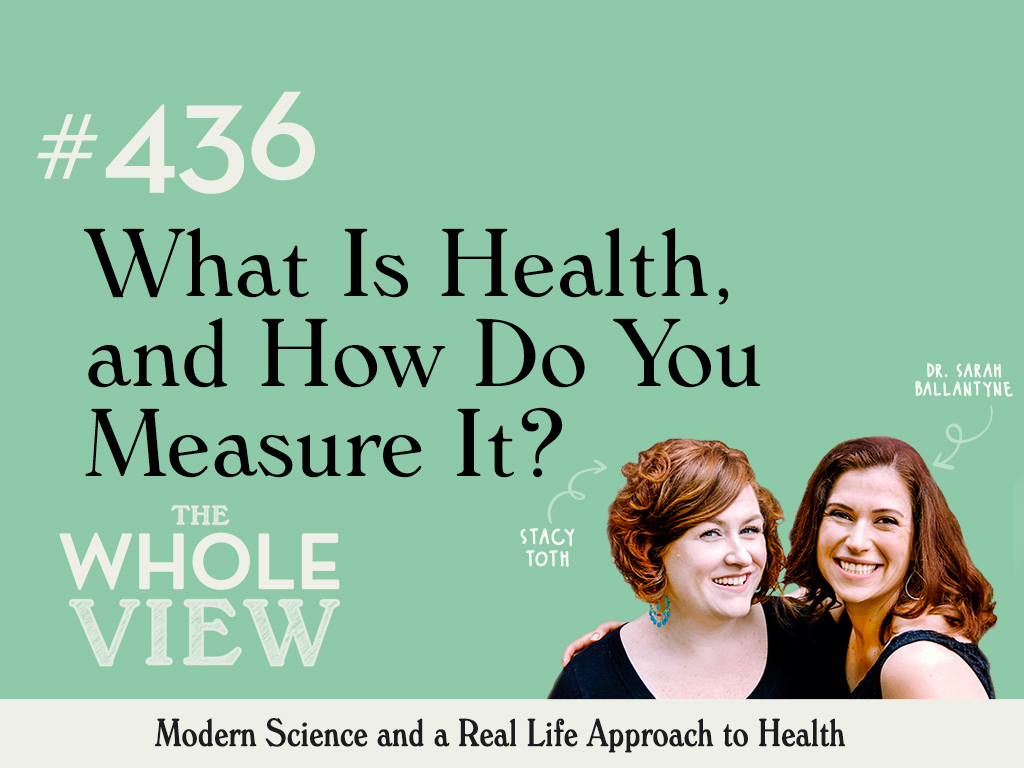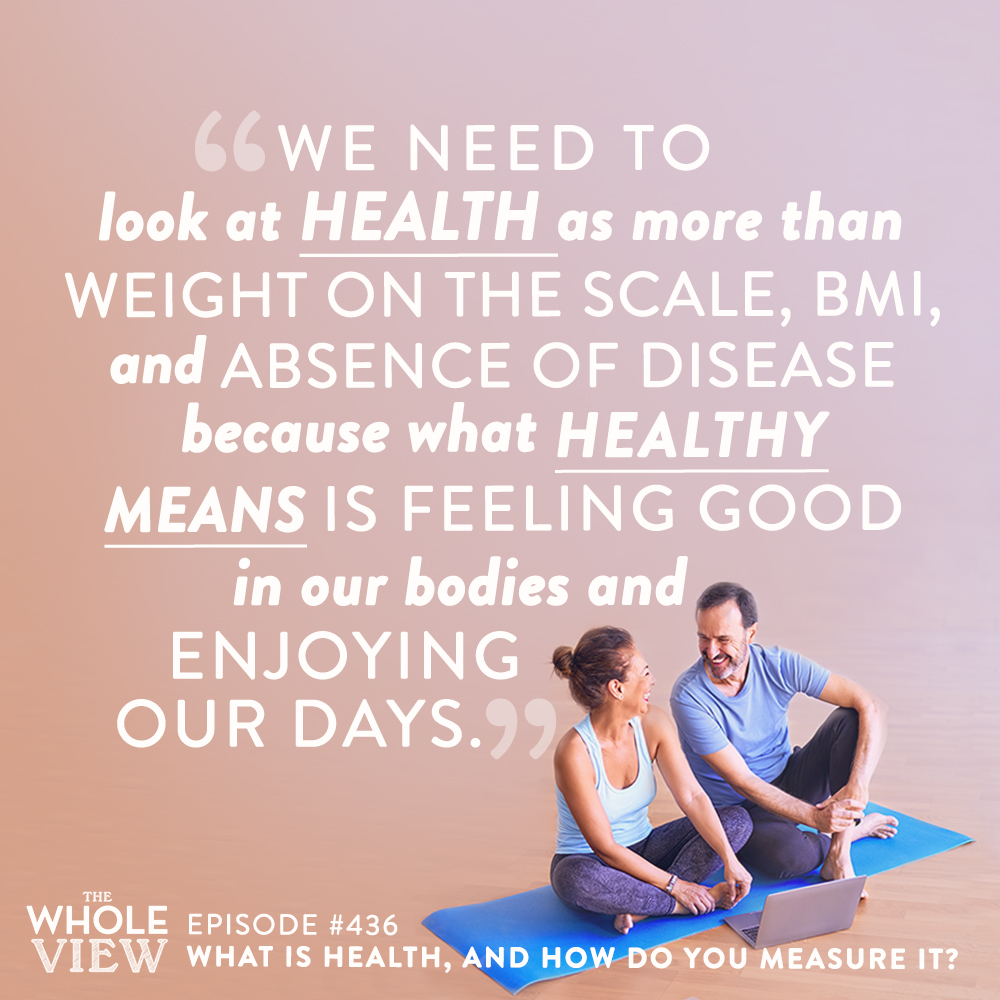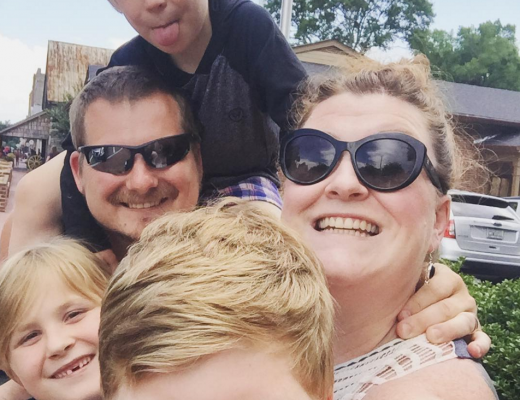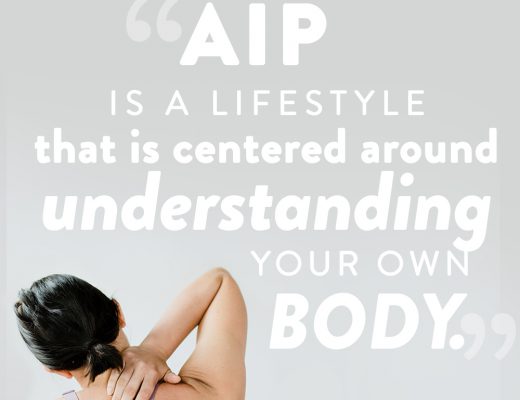
Welcome to episode 436 of The Whole View! This week, Stacy and Sarah look at the science behind health, how we measure it, and good health indicators. Stacy and Sarah both share stories and personal experiences about their own health journeys, and offer advice to any listeners looking to make healthier choices.
If you enjoy the show, please review it on iTunes!
The Whole View, Episode 436: What Is Health, and How Do You Measure It?
Welcome back to episode 436 of the Whole View. (0:27)
Stacy welcomes listeners and tells the audience how excited she and Sarah are to have new listeners!
She suggests they take a moment to introduce themselves.
Stacy has a 20-year career in Federal regulation and law. Her life-changing moment came from discovering what we put in and on our bodies affects our health.
Now she’s her own boss and leads a large team focused on getting safer, non-toxic living products into the hands of everyone.
Dr. Sarah has a medical research background and a Ph.D. in medical biophysics. She used diet and lifestyle to regain her health.
Now she sees herself as a science translator. Her goal is to build a bridge between the researchers working on expanding human knowledge and everyday people who can benefit from the information.
Stacy explains that a lot of Whole View shows lately have done some very deep dives into the science on topics like foods, lifestyle factors, hormones, and specific nutrients.
She explains it’s not about getting your body “beach body ready.” But more about your health and feeling good.
Today she and Sarah want to pull all that together and discuss the basic philosophy of health, how we define and measure the actual goal.
Stacy reminds listeners that she and Sarah are not medical professionals or giving you medical advice.
She and Sarah want to give you information to empower you and take with you to your doctors.
Perspective & Bias
Stacy battled weight her whole life. (4:55)
As a tween, she was sent to “camp shame,” which was basically a place for fat kids to lose weight.
This inevitably propelled her into cycles of yo-yo dieting with gaining, losing, and gaining hundreds of pounds throughout the course of her adult life.
Stacy shares that in coming to a health-oriented approach to her diet, she focused a lot on being a competitive athlete for the sport of StrongMan.
After an injury, it really caused her to re-evaluate how she defined self-care and self-love in the context of self-respect and acceptance.
Stacy explains how big a role acceptance played at this point in her life.
She had accepted her body in the context of her performance as an athlete but needed to work on accepting herself, period.
Lack of self-acceptance is how our societal and cultural beliefs are such that we allow media and marketing to think of ourselves as “less than” and “imperfect.”
She also explains that this is how they sell billions of dollars of products to us that encourage us to change.
It is a lot harder to convince somebody to change if they already accept themselves the way that they are.
Stacy tells the audience that this is where we see things that are NOT healthy:
- Thin, skinny, bikini body
- Jacked, ripped, swole
- Botox, collagen fillers, hair extensions, liposuction, lash serums that cause people to go blind
- Teas, weight loss products, that are actually nutrient depleting
Stacy tells listeners that these ideas of “health” aren’t realistic, but if you do use some of these products, that doesn’t make you a bad or unhealthy person.
She jokes that if you love your hair extensions and they make you feel good about yourself, there’s nothing wrong with that.
She also adds that the belief that thin = healthy is just wrong.
Health vs. Beauty
Stacy explains that many companies prey on making us feel like we need these products. And some people even risk going blind, hoping that they end up the percentage of people who get the long lashes. (8:40)
Sarah takes a minute to highlight the misdirect between health and beauty.
Unfortunately, Sarah says, it’s so pervasive that it’s difficult to persuade people into opening their minds.
Stacy adds that stereotypical ideas of beauty don’t even equate to a healthy lifestyle.
She cites underweight models are seen as ideal even though underweight is actually detrimental to your health.
The ideal body type has changed over centuries, and right now, the general belief is one where people believe thin is healthy.
Stacy and Sarah covered this idea in-depth in Episode 421.
Stacy reminds everyone that science has actually proved the BMI chart is more wrong than right.
It tends to lead us to “assume” thin people are healthy and overweight people are not.
Sarah emphasis that there is a really big lag between scientific discoveries, for example, lifestyle changes, and doctors implement it.
In some cases, this lag can be up to twenty years long.
For example, for years, doctors would tell them to stop eating high cholesterol foods if someone had high cholesterol.
We know now that our cholesterol isn’t impacted by what we eat, but rather our lifestyle and genetics.
How Doctors Define Health?
Free of disease is a big one. But “lack of disease” doesn’t necessarily mean “healthy.” (15:15)
Low-risk factors for disease are:
-
- BMI, weight, or waist to hip circumference ratio
- Blood pressure
- Serum cholesterol (HDL, LDL, total, and triglycerides)
- Fasting blood sugar and insulin
Doctors look for normal vital signs, including heart rate, respiration rate, blood pressure, temperature, and other things.
A regular doctor examination is also something they look at for determining health.
This takes into account general appearance, heart exam, lung exam, head and neck exam, abdominal exam, neurological exam, dermatological exam, extremities exam, male and female exams, etc.
A lot of day-to-day symptoms, like constipation, headaches, stomach issues, etc., that aren’t actually “normal” often go unnoticed because they are normal to us.
This means we don’t always talk to doctors about these things because we’re still able to function.
BUT all the things a doctor measures during an annual physical are designed to diagnose disease. And usually, their techniques are quite outdated based on their education and continuous learning.
Sarah explains that “normal” means the absence of disease and not necessarily healthy.
Even worse, we can see significant evidence of misdiagnosis of doctors who assume health equals lack of disease when people look a certain way—for example, being overweight.
Sarah reveals that thin people have heart attacks and strokes while the “overweight” category of people actually have the longest life expectancy.
She poses the question go what a better science-backed way to look at it is?
A Better Definition of Health
Sarah underlines that the goal of all this is to be healthy and not thin or swole. (20:46)
She offers a better definition of health as being free of symptoms of the disease.
A healthy diet and lifestyle can go a long way toward managing chronic diseases.
This includes symptoms not associated with a diagnosis that is normalized and explained away as signs of stress, or aging, or the idea of “I just need to work out more, eat more fiber, or lose 10 pounds.”
These missed symptoms often include headaches, skin conditions like acne, rosacea, eczema; gastrointestinal problems like constipation, diarrhea, flatulence, bloating, super stinky poops or farts, reflux, or belching; fatigue; joint or muscle aches; and even emotional issues like irritability or malaise.
Stacy shares that a big wakeup call for her was when she started monitoring inflammation.
Every time she would visit a doctor for symptoms associated with her many autoimmune diseases, doctors told was always told she needed to lose weight.
She even shares that no one really looked into or even asked about many of her other symptoms that she, who does not have a medical background, didn’t realize were signs of other things.
Had she known, she could have done a lot more sooner.
Stacy also reminds listeners that this is not aimed at making anyone feel bad about themselves or giving them a list of things to change.
There’s a balance to everything. She stressed that the science behind health should act as a compass, rather than a strict set of rules.
Stacy explains you need to love yourself the same way you love your kids or your mom.
You love them because you love them.
Signs of Physical Health
Sarah explains that what we’re trying to do is give us better tools to measure health with. (26:15)
She believes the problem is weight is such a poor measure of health.
Sarah explains that looking at energy levels throughout the day is a good way to measure health.
- No “crash” at the end of the day
- No need to rely on sugar or caffeine to pick us up
- Don’t fall asleep/nap at odd times like on the bus or on the couch after dinner
Body composition is also a good way of looking at health and not weight itself.
We know from the scientific literature that having higher muscle mass is a more important determinant of health than fat mass.
Where your fat deposits are (subcutaneous fat vs. visceral fat), and what type of fat it is (BAT or WAT) is more important as well.
Sarah explains enjoying the activity is also considered a great indicator of health. This can be as simple as outside play, visiting farms, etc.
The ideal is to enjoy working towards a fitness goal, or just enjoy moving, and not just focusing on losing weight or looking better.
Spontaneous physical play is a great indicator of health (is it fun to race your kid to the bus stop, spontaneously dance to a song on the radio)
Stacy jokes she loves things like spontaneous dance parties, especially when it embarrasses her kids.
Feeling like we need to get up and move after being sedentary too long because it’s normal to feel crummy after sitting for too long.
Sarah believes sleep quality is a huge indicator of health as well.
- Falling asleep quickly
- Staying asleep
- Wake up feeling refreshed
“Sense of wellbeing” and sex hormone regulation are both good indicators of physical health.
Sarah explains that this includes:
- Having a normal libido (for women, it fluctuates with hormones)
- Wanting and enjoying “sexual relations” (with a partner or by ourselves)
- Regular menstruation
Mental Health As A Sign Of Overall Health
Stacy adds she’s always seen mental health as a huge indicator of how healthy we are. (35:05)
Sarah agrees, adding that if you’re looking at how healthy you are overall, you’re going to want to check in on how you’re doing mentally.
This can include ental clarity, problem-solving, and memory, and no brain fog or cognitive challenges.
Sarah adds that a balanced emotional response is also a good indicator of mental and physical health. This means that you’re not prone to overreactions.
Sarah adds effective communication, overall happiness, and enjoying life, coping in a productive (not destructive) way, and flexibility to that list.
It’s a good sign to enjoy playing and engaging with others, like pets, kids, games, or other close relationships.
Sarah explains another interesting indicator that we’re healthy mentally is to be ok being bored and existing inside our own heads without needing a distraction.
Stacy adds that through her work as a foster parent, she’s realized how well trauma can hide in ourselves.
Also, there is no need for “crutches” or willpower (physical + mental health) like caffeine and sugar, self-medicating, smoking, drinking, recreational drugs, etc.
Stacy explains that these crutches can act as a way of avoiding mental health and can negatively impact your physical health.
She urges listeners that when making food choices, focus on ones that are helpful and healing.
Why It Matters
When we have a healthy lifestyle, we tend to enjoy healthier food and not crave food that can harm our health. (43:45)
Getting enough sleep regulates appetite and food cravings and makes people more likely to CHOOSE fruits and veggies over fast food.
Sarah explains that stress increases appetite and cravings for energy-dense foods (salt, sugar, fat)
When healthy foods are our normal, we’re not consuming addictive hyper-palatable engineered/manufactured foods.
It’s so much easier to really, truly enjoy an apple if we’re not eating donuts regularly.
When we’re getting enough sleep, we don’t need coffee or energy drinks to get us through the day.
Sarah reminds listeners that that doesn’t mean you have to give up coffee entirely. The goal is not to rely on it.
She adds that a big part of this is finding better coping mechanisms for when things happen, like an energy crash at 3 pm.
It’s easy to reach for the caffeine, but it could be as simple as taking an afternoon walk to recharge.
Stacy explains no one is expected to check every one of these boxes, but it gives perspective on areas of your life to optimize health.
These indicators reflect physical health and mental health and the underlying biology of both.
They are signs of no nutritional deficiencies, having well-regulated neurotransmitters and hormones, a healthy gut, healthy immune system, healthy cardiovascular system, etc.
Stacy loves the idea of a crutch not necessarily being a negative thing but relying more on how you use it and benefit your health overall.
How Can We Measure Health?
When measuring your own health, Sarah suggests reflecting on what we’ve discussed so far:
- Keep a simple journal (if you’re troubleshooting, note diet, sleep, activity, emotions/stress, and any symptoms)
- Energy levels
- Mood, malaise, emotional response
- GI symptoms and stool quality/frequency
- Skin health (can also include things like fingernails, hair, etc.)
- Pain: Headaches, body aches, joint, muscle
- Cognition (IQ boosting games that give a score are a fun way to track this)
- Subjective sleep quality (or measure with a tracker)
- Stress, baseline, and response (or measure HRV)
- Health-related quality of life (HRQOL) is an individual’s perceived physical and mental health over time.
She also recommends checking out these resources for a Quality of Life Scale and Quality of Life Sheet.
No Quick Fix
Stacy adds that there’s no quick fix to increasing your health and wellness. (52:21)
She reminds listeners that it’s never her or Sarah’s goal to have you walk away from these shows feeling like you should be doing something you’re not.
Sarah shares that she loves the idea of people taking on a more holistic view of health that’s more than just a number on a scale.
When we think about health more comprehensively, one thing that starts to become apparent is that there’s no magic pill or quick fix that will get us there.
Instead, making healthy choices day-to-day (without the need to be perfect) sustainably and consistently gets us there.
The foundations of health include four pillars:
- A nutrivore diet!
- Sleep (enough and on a consistent schedule)
- Stress management (work, family, social networks, and nature)
- Activity (lots and lots of it but not overtraining)
Sarah adds that health is quality of life, and by making better choices, we can better support our health.
Stacy asks listeners to reflect on their self-worth and check-in with themselves.
She wants everyone to love who they are just the way they are and love themselves without restriction.
Stacy invites you to check out Episode 421 on body image if you liked the positive body message of this episode.
Thanks so much for listening today, and we will see you next week!





